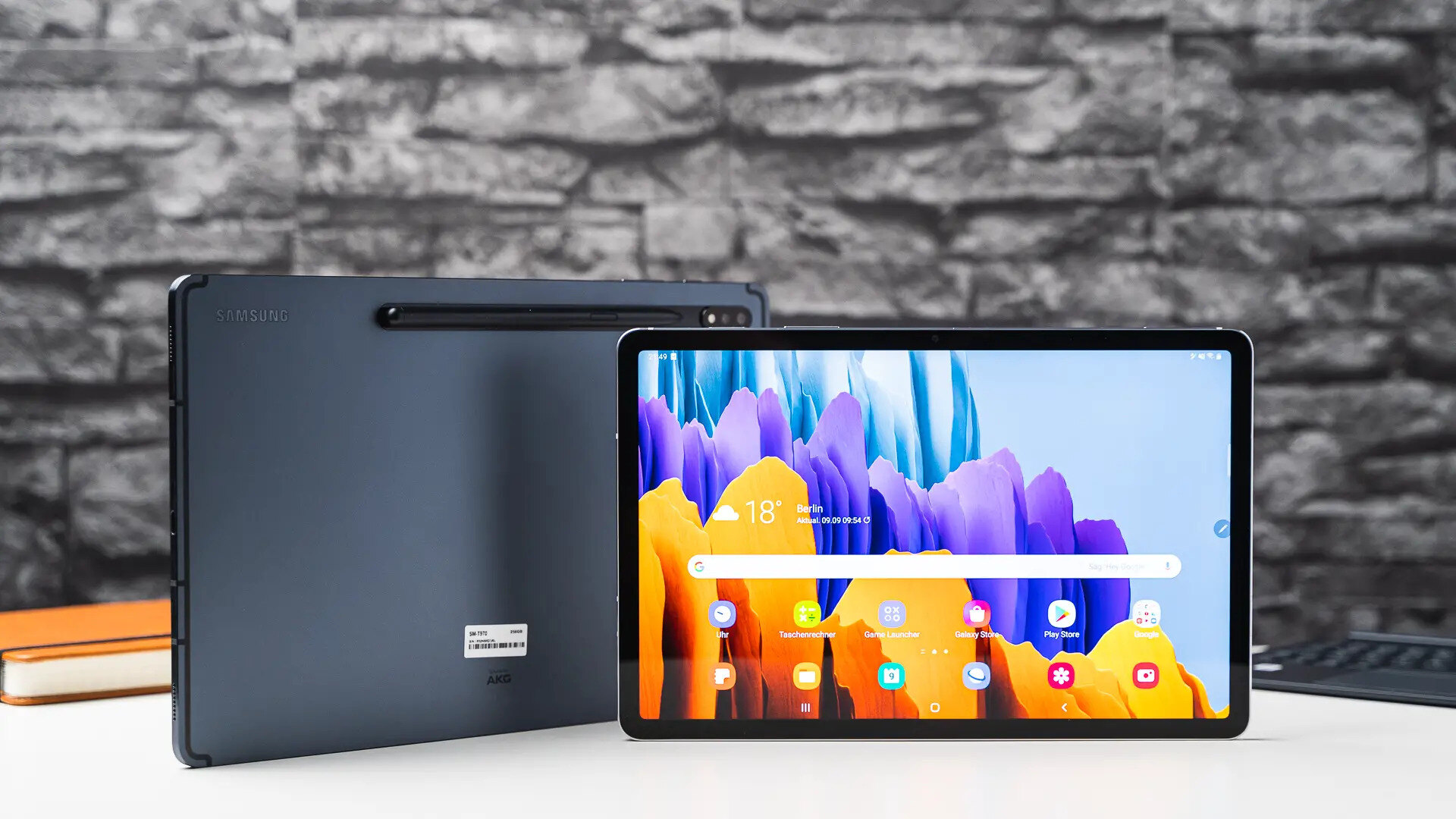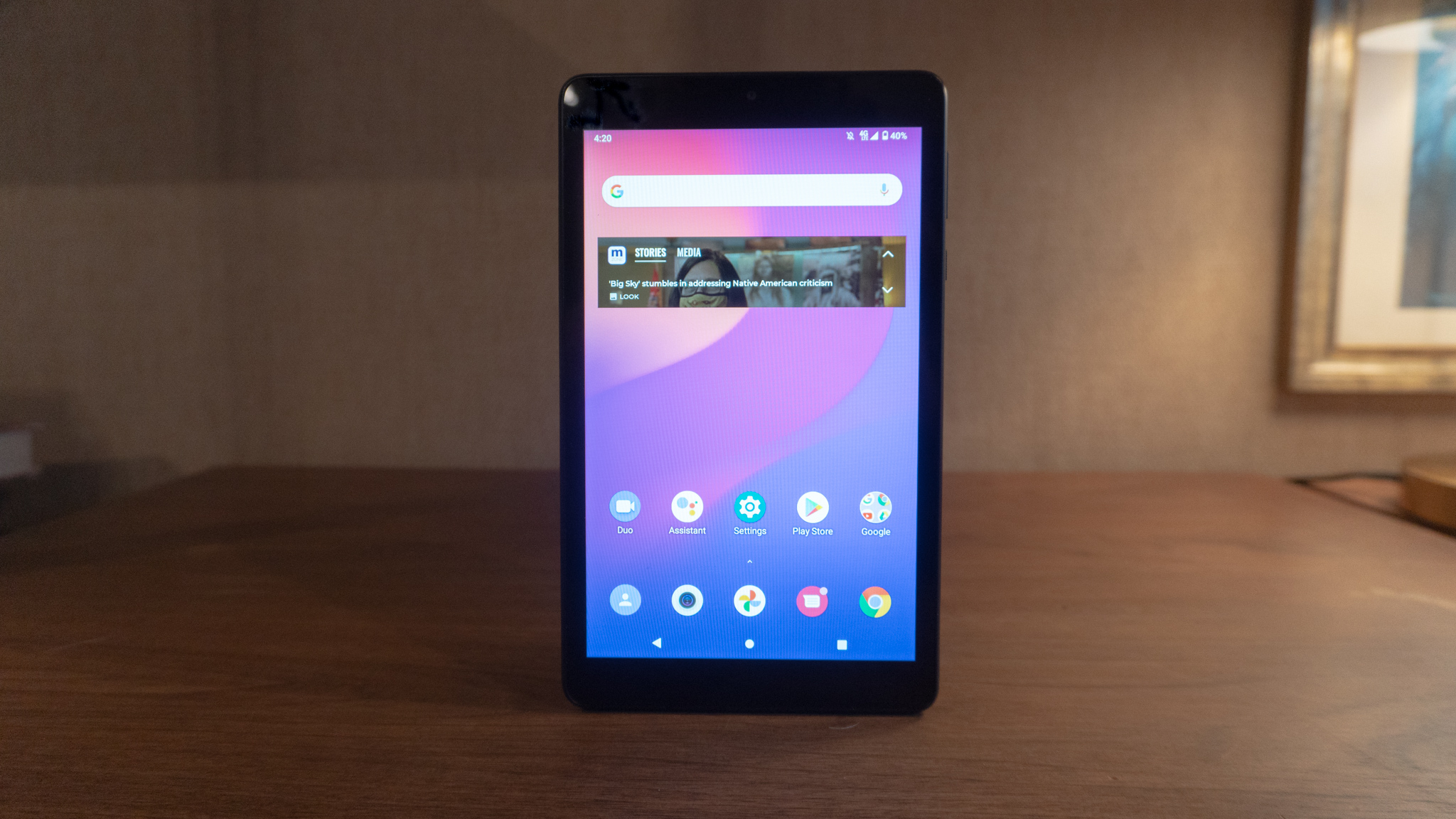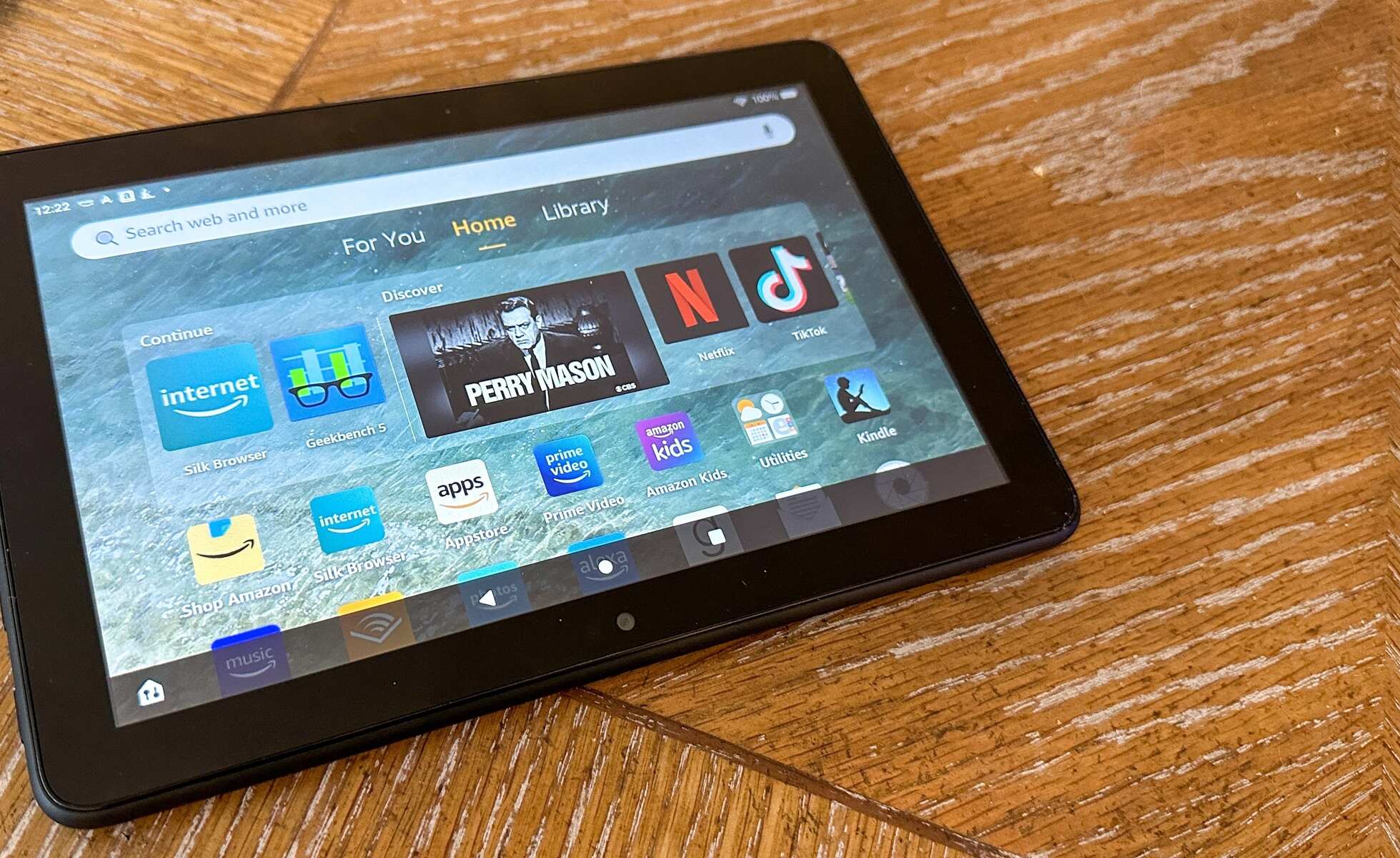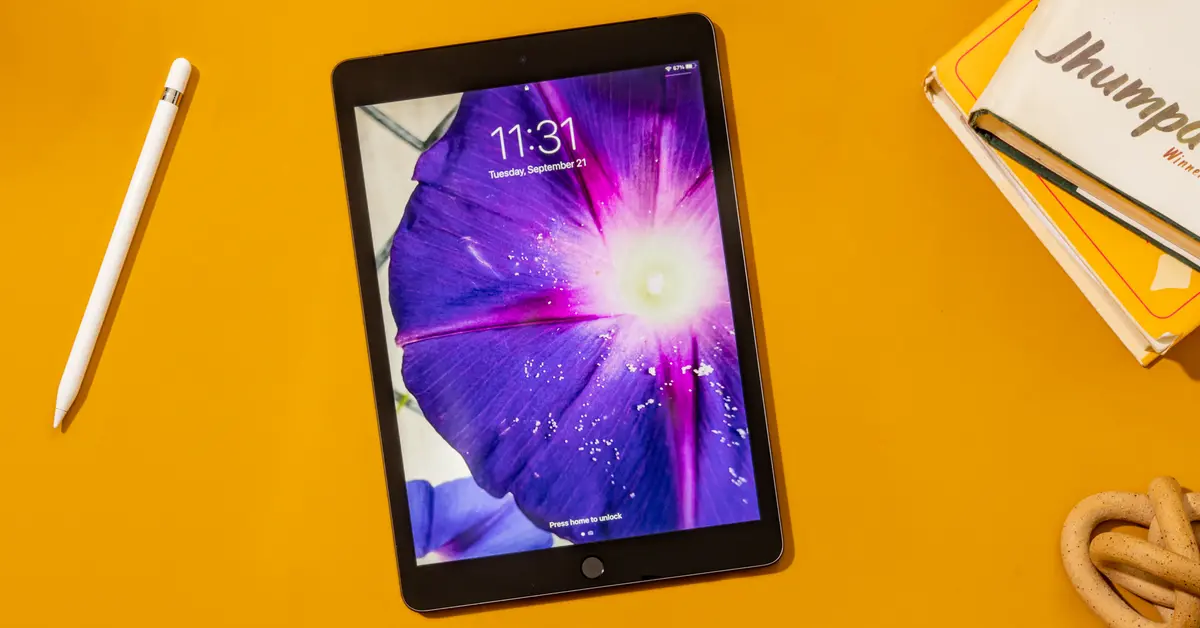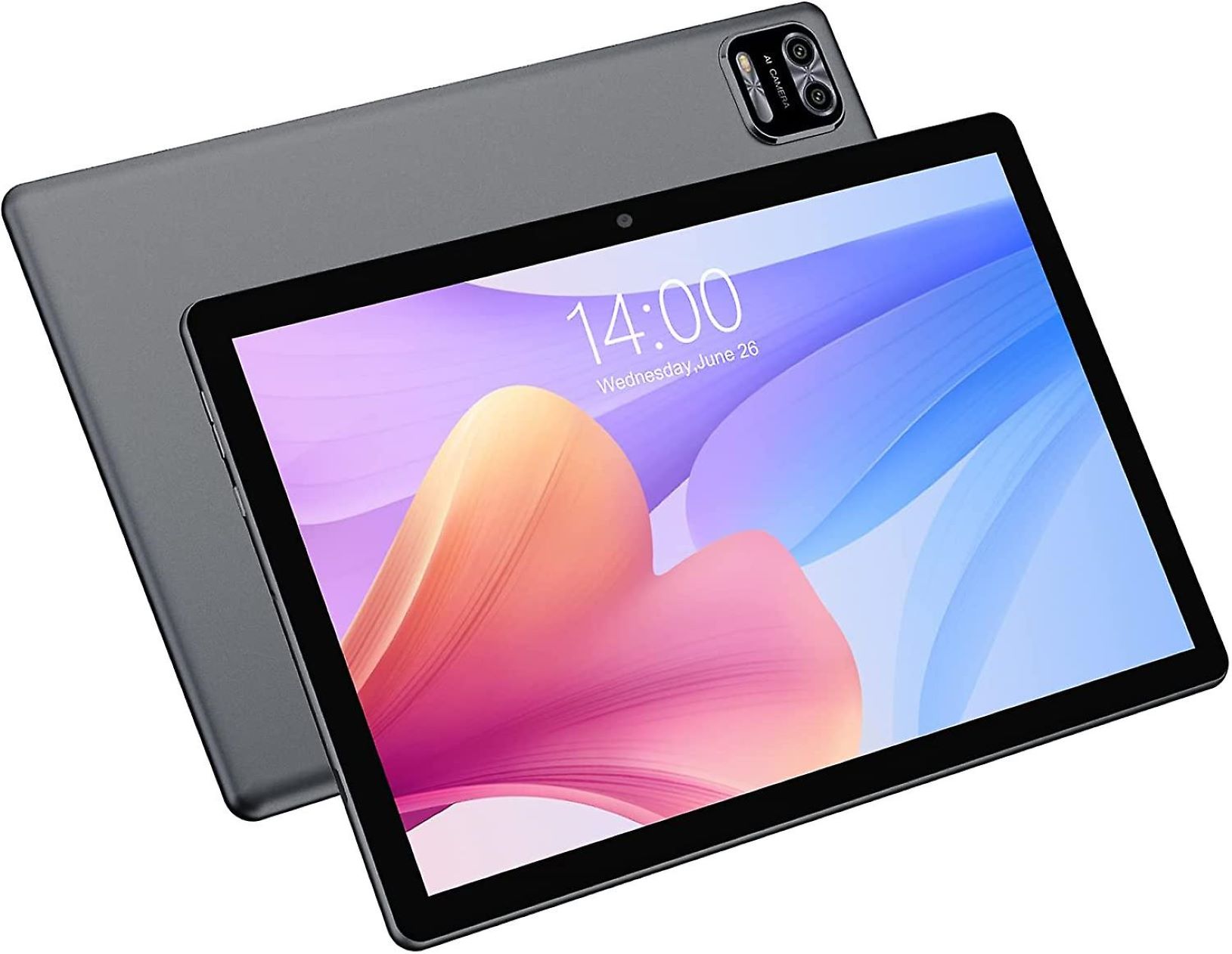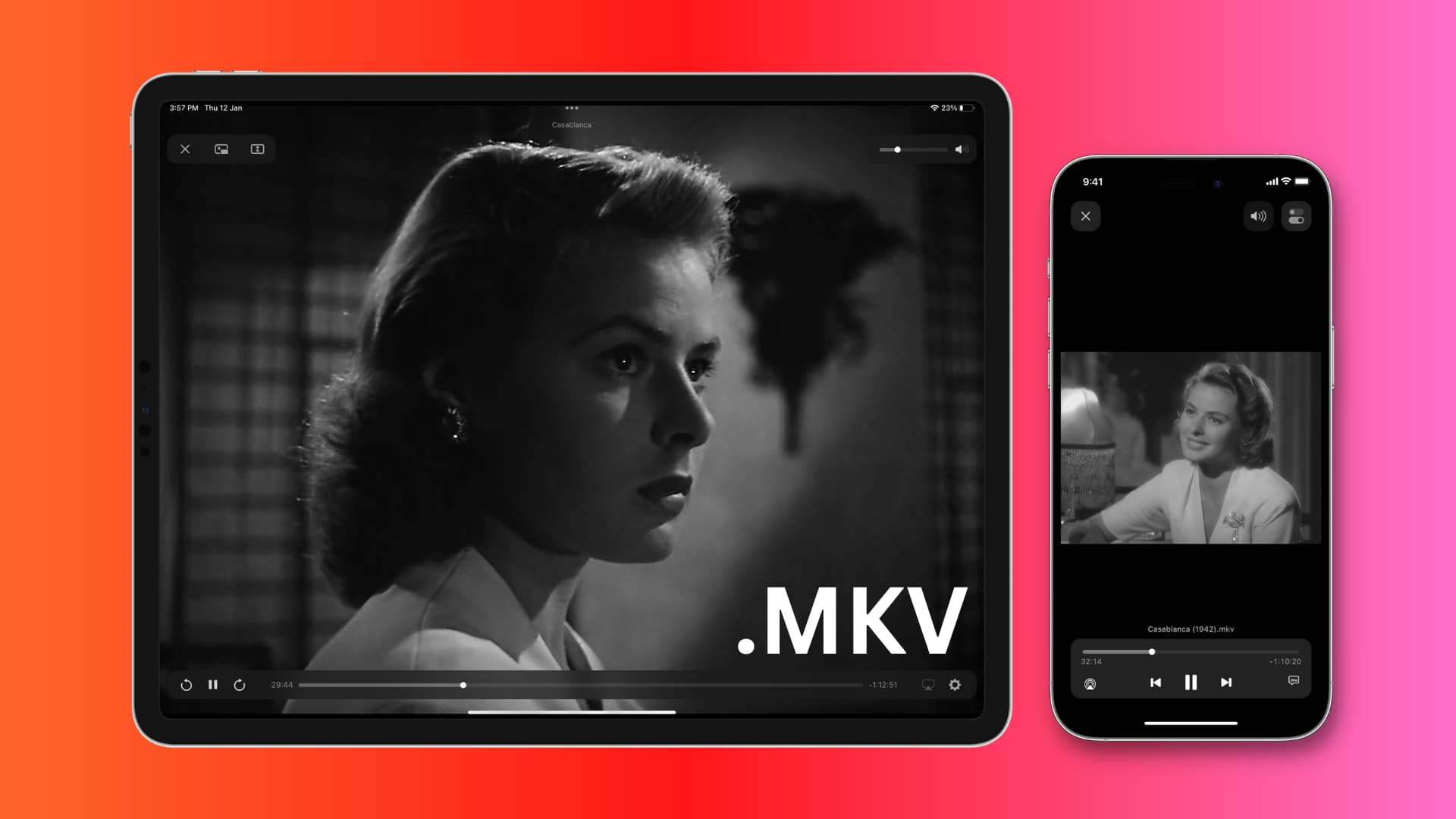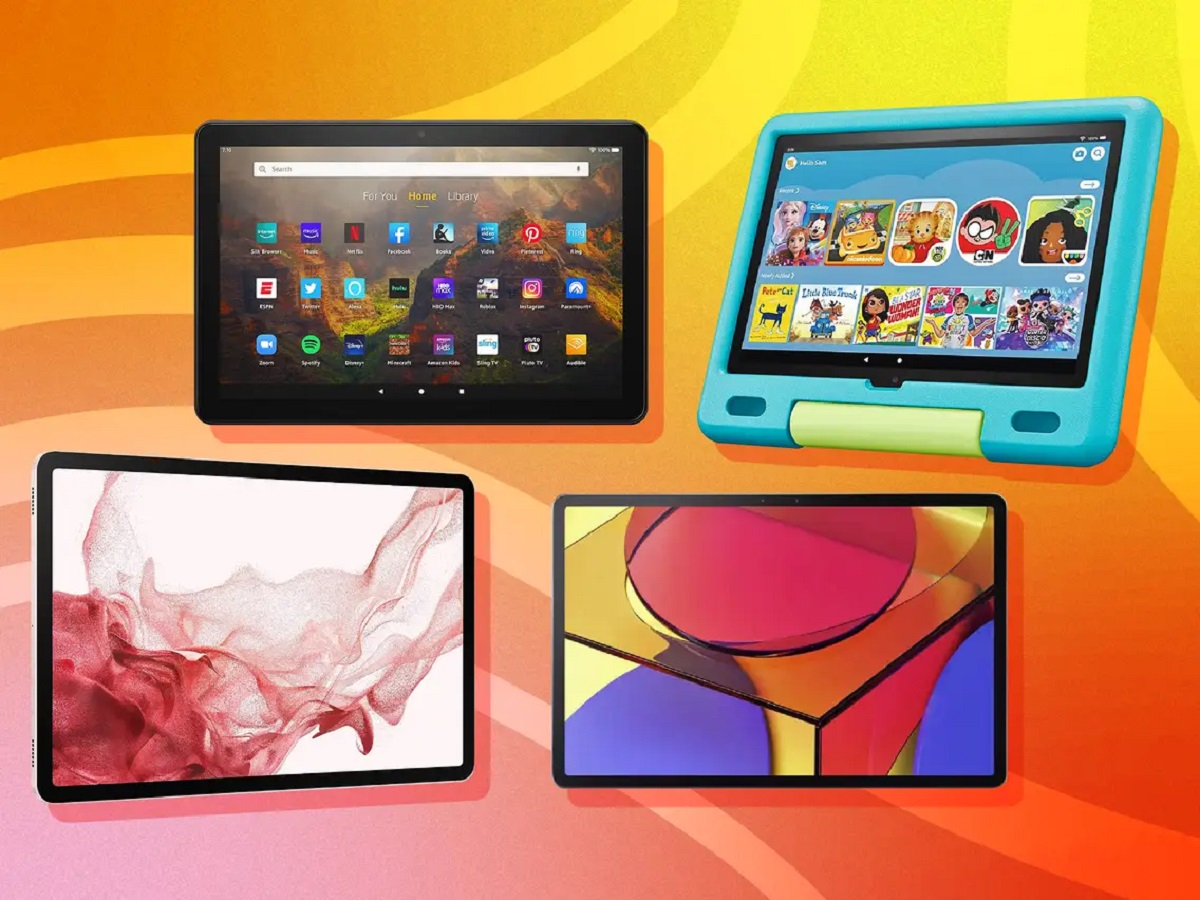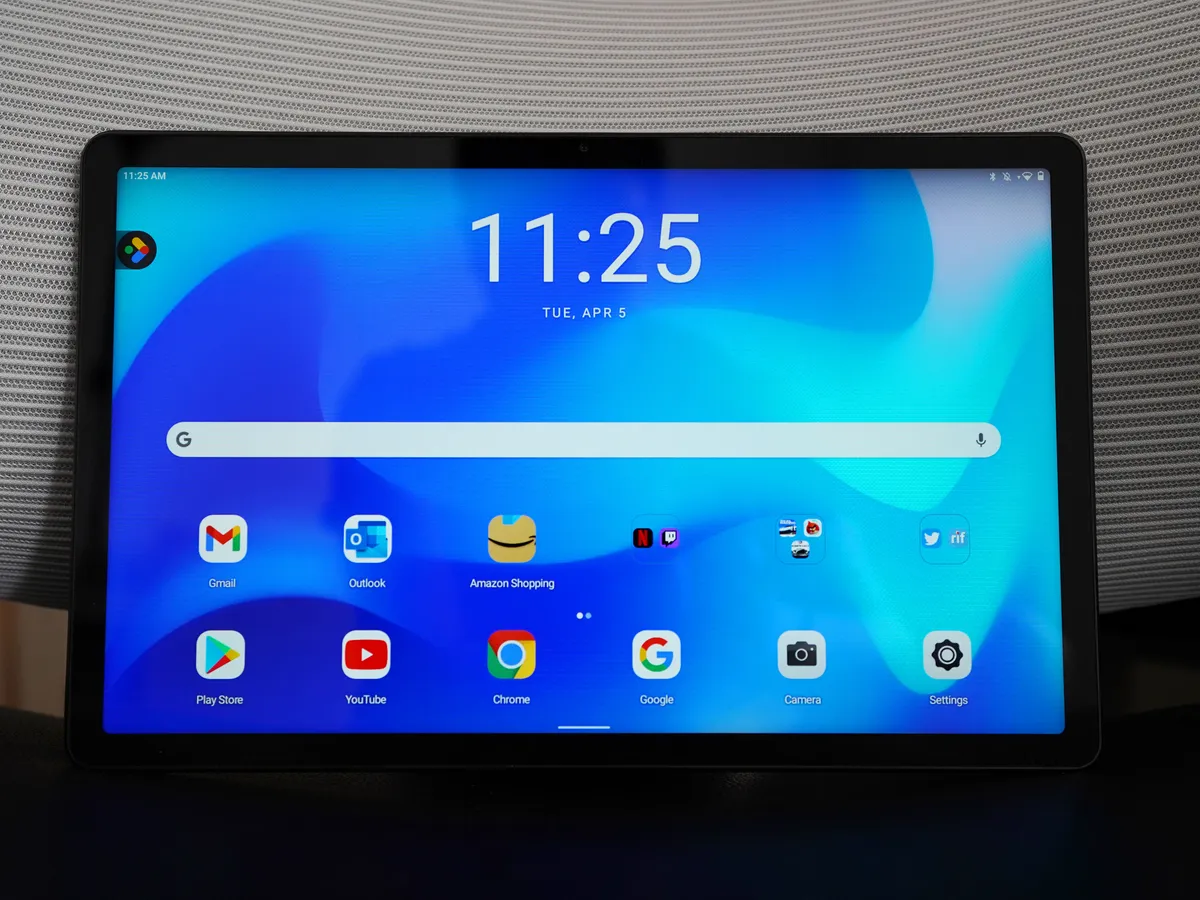Introduction
When it comes to choosing the perfect Android tablet, finding one that suits your needs and preferences can be a daunting task. With so many options available in the market, it’s essential to understand what makes a good Android tablet stand out from the rest.
An Android tablet is a versatile device that offers a blend of portability and functionality. Whether you’re a student, a professional, or someone who simply enjoys streaming movies and playing games on the go, a good Android tablet can be your ideal companion.
The key to finding a good Android tablet lies in considering several factors such as display quality, performance, battery life, operating system, storage capacity, connectivity options, camera capabilities, audio quality, and overall price. By evaluating these aspects, you can make an informed decision and select a tablet that best aligns with your requirements and budget.
In this guide, we will walk you through each of these factors in detail, enabling you to gain a deeper understanding of what to look for when buying a new Android tablet.
Display
The display quality of an Android tablet is a crucial factor to consider, as it directly impacts your viewing experience. A good Android tablet should have a vibrant and sharp display that brings your movies, photos, and games to life.
When evaluating the display, look for the resolution, screen size, and pixel density. Higher resolutions, such as Full HD or even 4K, offer more detail and clarity. A larger screen size provides a more immersive experience, especially for multimedia consumption. Additionally, a higher pixel density ensures that the display is crisp and free from pixelation.
Another important aspect to consider is the type of display technology used. Tablets may feature LCD, OLED, or AMOLED screens. LCD displays are commonly found in budget-friendly options, offering decent color reproduction. OLED and AMOLED displays, on the other hand, provide deeper blacks, vibrant colors, and better contrast, perfect for those who enjoy watching movies or playing visually-intensive games.
Touch responsiveness is also a crucial factor in a tablet’s display. A good Android tablet should have a responsive and accurate touch screen, ensuring smooth navigation and seamless interaction with apps and games.
Lastly, consider the durability and protection of the display. Some tablets come with scratch-resistant and shatterproof glass, providing added peace of mind and longevity.
Overall, for a good Android tablet, look for a display that offers high resolution, ample screen size, crisp pixel density, vibrant colors, and responsive touch functionality. By choosing a tablet with a good display, you can enjoy a visually pleasing and immersive experience with your favorite content.
Performance
The performance of an Android tablet is a key consideration when looking for a good device. A tablet with strong performance will ensure smooth multitasking, fast app loading times, and an overall seamless user experience.
The processor is the heart of a tablet’s performance. Look for models with powerful processors like Qualcomm Snapdragon or MediaTek. These processors offer strong performance and efficient power management, allowing you to run multiple apps, play games, and watch videos without lag or slowdowns.
RAM (Random Access Memory) is another important factor to consider. Tablets with higher RAM capacity tend to have better performance as they can handle multiple tasks simultaneously. Aim for at least 4GB or more of RAM, especially if you plan to use your tablet for heavy multitasking or resource-intensive apps.
In addition to the processor and RAM, storage capacity is crucial for a smooth experience. Tablets typically offer internal storage capacities ranging from 16GB to 256GB or more. Consider your usage needs – if you download a lot of apps, games, and media, opt for models with higher storage capacity, or those that offer expandable storage options through microSD cards.
Moreover, a good Android tablet should provide a seamless and intuitive user interface. Look for tablets that run on the latest version of Android and offer a clean, user-friendly interface with minimal bloatware. This ensures a smooth and enjoyable user experience.
Battery life is also a critical aspect of tablet performance. Look for tablets with larger battery capacities, as they will provide longer usage times. Additionally, tablets equipped with fast charging technology will allow you to quickly recharge the device and get back to using it without much downtime.
In summary, a good Android tablet should have a powerful processor, sufficient RAM, ample storage capacity, an intuitive user interface, and long-lasting battery life. By considering these performance factors, you can ensure a fast, responsive, and enjoyable tablet experience.
Battery Life
Battery life is a crucial factor to consider when looking for a good Android tablet. After all, you want a device that can last throughout the day or accommodate your usage patterns without constantly needing to be charged.
The battery capacity is an important specification to consider. Tablets with larger battery capacities tend to offer longer usage times. Look for tablets with battery capacities of at least 5000mAh or more for optimal battery performance.
In addition to capacity, the efficiency of the tablet’s hardware and software also plays a role in battery life. Tablets with power-efficient processors and optimized operating systems can help maximize battery life. Look for devices that boast energy-efficient features, such as power-saving modes or adaptive battery technology.
Furthermore, the way you use your tablet can also impact battery life. Activities such as streaming high-definition videos, playing graphics-intensive games, or running multiple apps simultaneously can drain the battery faster. Consider your usage patterns and opt for a tablet that can cater to your needs without running out of juice too quickly.
It’s also worth noting that some tablets come with fast-charging capabilities. This feature allows you to recharge the tablet quickly, minimizing downtime. If you are constantly on the move and don’t have much time to wait for your tablet to charge, consider a device that supports fast charging.
Ultimately, a good Android tablet should offer a balance between battery capacity, efficient hardware, and power-saving features. By considering these factors and aligning them with your usage patterns, you can find a tablet that provides adequate battery life for your needs.
Operating System
The operating system (OS) is a crucial aspect to consider when choosing a good Android tablet. The OS defines the overall user experience, compatibility with apps, and access to the latest features and updates. Therefore, it’s important to choose a tablet running a reliable and up-to-date operating system.
Android is the most popular operating system for tablets, and it offers a wide range of features and customization options. When selecting an Android tablet, you should look for models running the latest version of the OS, as it ensures compatibility with the newest apps and security patches.
Google’s stock Android is known for its clean and intuitive interface, with minimal pre-installed apps, also known as bloatware. It provides a smooth and clutter-free user experience. However, some manufacturers customize the Android OS with their own skins or user interfaces. While this can offer unique features and additional customization options, it may also result in slower software updates and potential compatibility issues.
Another consideration is the availability of the Google Play Store. Make sure the tablet you choose comes with pre-installed access to the Play Store, as it is the official marketplace for Android apps. Having access to a vast library of apps, games, and entertainment content is crucial for a fulfilling tablet experience.
Moreover, consider the compatibility of the OS with your other devices and ecosystem. If you own other devices, such as smartphones or smart home devices, it can be beneficial to choose a tablet running the same operating system to ensure seamless integration and synchronization.
Updates and security are also important when evaluating the operating system. Look for tablets from manufacturers that have a good track record of providing regular software updates, as it ensures access to new features and bug fixes. Additionally, consider tablets that have built-in security features, such as fingerprint sensors or facial recognition, to protect your data and ensure a secure user experience.
In summary, choose a tablet that runs the latest version of Android, has access to the Google Play Store, offers a clean and intuitive user interface, and receives regular software updates. By considering the operating system, you can ensure compatibility, access to new features, and a secure tablet experience.
Storage
When considering a good Android tablet, storage capacity is an important factor to take into account. The amount of storage your tablet has directly affects how many apps, files, photos, and videos you can store on the device.
Most tablets offer varying storage options, typically ranging from 16GB to 256GB or more. It’s essential to assess your storage needs and choose a tablet with an appropriate capacity. Consider the type of content you plan to store on your tablet – if you enjoy downloading movies, games, and heavy media files, you may need a tablet with higher storage capacity.
Additionally, some tablets offer expandable storage options through microSD cards. This feature allows you to increase the storage capacity by inserting a memory card. If you anticipate needing extra storage in the future, look for a tablet with a microSD card slot.
It’s worth noting that the operating system and pre-installed apps also occupy a portion of the tablet’s internal storage. Therefore, it’s advisable to go for a tablet with more storage than you think you’ll need to ensure you have enough space for your apps and personal files.
Another factor to consider is the speed of the storage. Some tablets come with faster storage technologies like solid-state drives (SSD), which offer quicker app loading times and smoother multitasking. However, tablets with faster storage options can be more expensive, so balance your budget with your performance requirements.
Cloud storage is also a consideration for many users. Some Android tablets integrate with cloud storage services such as Google Drive or Dropbox, allowing you to store your files online and access them from anywhere with an internet connection. This can be a convenient option for those who want to save local storage space and have their files backed up securely.
In summary, consider the storage capacity of the Android tablet, keeping in mind your usage needs and the type of content you plan to store. If needed, look for tablets with expandable storage options. Additionally, take into account the speed of the storage and consider cloud storage options for added convenience.
Connectivity
Connectivity is an important aspect to consider when choosing a good Android tablet. The ability to stay connected and access the internet seamlessly is crucial for many tablet users. There are several connectivity options to evaluate when selecting a tablet.
First, consider the wireless connectivity options. Most tablets offer Wi-Fi connectivity, allowing you to connect to your home or public Wi-Fi networks. Look for tablets that support the latest Wi-Fi standards, such as Wi-Fi 6 (802.11ax), as they offer faster speeds and better overall performance. Additionally, some tablets may have dual-band Wi-Fi, which allows you to connect to both 2.4GHz and 5GHz networks, providing more flexibility and better coverage.
Another important consideration is cellular connectivity. Some tablets offer the option to have built-in SIM card slots or eSIM support, allowing you to connect to cellular networks and access the internet on the go. This is particularly useful if you frequently travel or need constant connectivity in areas without Wi-Fi coverage. However, tablets with cellular capabilities may come at a higher cost, and you may need to subscribe to a data plan from a mobile carrier.
Bluetooth is another connectivity feature to consider. Tablets equipped with Bluetooth allow you to connect wirelessly to other Bluetooth-enabled devices such as headphones, speakers, keyboards, and more. Look for tablets with the latest Bluetooth version, such as Bluetooth 5.0 or above, for improved data transfer speeds and better connection stability.
Additionally, it’s worth considering the availability of ports on the tablet. Most modern tablets come with USB ports, typically in the form of USB-C, which allows for fast data transfers and charging. Look for tablets with USB-C ports to ensure compatibility with a wide range of accessories and future-proof connectivity.
Lastly, other connectivity features to consider include NFC (Near Field Communication), which enables contactless payments, and GPS (Global Positioning System), which allows for accurate location tracking. If these features are important to you, make sure the tablet you choose supports them.
In summary, a good Android tablet should offer reliable Wi-Fi connectivity, support for the latest wireless standards, and optional cellular connectivity for on-the-go internet access. Consider the availability of Bluetooth, USB ports, and additional features such as NFC and GPS, depending on your specific needs.
Camera
The camera functionality of an Android tablet is an important consideration, especially for those who enjoy capturing photos and videos on the go. While tablets aren’t typically known for their camera capabilities compared to smartphones, there are still factors to consider when looking for a tablet with a good camera.
First, consider the resolution and quality of the camera. Look for tablets that offer higher megapixel (MP) counts, as they generally capture more detail and produce sharper images. However, megapixels are not the only factor that determines image quality. The quality of the sensor and the image processing algorithms used by the manufacturer also play a significant role.
Additionally, consider the presence of features such as autofocus, image stabilization, and HDR (High Dynamic Range) support. These features can improve the overall quality of your photos, especially in challenging lighting conditions.
Video recording capabilities are also worth considering. Some tablets offer the ability to record videos in 1080p or even 4K resolution, which can result in more detailed and vibrant video footage. Look for tablets with features like optical image stabilization (OIS) or electronic image stabilization (EIS) for smoother and less shaky videos.
Furthermore, front-facing cameras, also known as selfie cameras, are important for video calls and taking self-portraits. Consider the resolution and quality of the front-facing camera if you plan to use your tablet for these purposes.
It’s important to note that while tablets may have good camera specifications, the larger size and unwieldy form factor can make them less ideal for capturing photos and videos compared to smartphones. However, if you prioritize camera quality on a tablet, look for models with better camera specifications.
In summary, if camera quality is important to you, consider tablets with higher megapixel counts, quality sensors, and additional features such as autofocus, image stabilization, and HDR support. Keep in mind that while tablets can offer decent camera capabilities, they may not match the quality and convenience of dedicated cameras or smartphones.
Audio
The audio quality of an Android tablet can significantly enhance your multimedia experience, whether you’re watching movies, playing games, or listening to music. When considering a good Android tablet, it’s important to evaluate the audio capabilities of the device.
One of the key factors to consider is the presence of stereo speakers. Tablets with stereo speakers offer a more immersive audio experience, providing a wider soundstage and better separation between left and right channels. Look for tablets that have front-facing or side-firing stereo speakers for optimal audio output.
Audio enhancements and technologies also contribute to the overall audio quality. Look for tablets that feature technologies like Dolby Atmos, which creates a dynamic and three-dimensional sound experience. Some tablets may have built-in equalizers or audio tuning options that allow you to customize the sound to your liking.
Additionally, consider the positioning of the speakers. Tablets that have speakers positioned on the front or sides tend to provide better audio quality, as the sound is directed towards the user. Tablets with speakers located on the back may offer a compromised audio experience, as the sound may be muffled or easily blocked when holding the device in certain orientations.
Headphone and audio connectivity options are worth considering as well. Look for tablets that support a 3.5mm headphone jack if you prefer to use wired headphones or external audio devices. Additionally, check if the tablet supports Bluetooth audio codecs like aptX or LDAC for high-quality wireless audio streaming to compatible headphones or speakers.
Battery life can also impact your audio experience. If you plan to use your tablet extensively for media consumption, it’s important to choose a tablet with long-lasting battery life, ensuring you can enjoy your audio content without interruptions or constant recharging.
In summary, a good Android tablet should have stereo speakers, audio enhancements such as Dolby Atmos, and favorable speaker positioning for improved audio quality. Consider the availability of a headphone jack and support for high-quality Bluetooth audio codecs if you prefer using external audio devices. Lastly, choose a tablet with sufficient battery life to enjoy extended audio playback.
Price
When looking for a good Android tablet, the price is a crucial factor to consider. Tablets are available in a wide range of prices, and determining your budget beforehand can help narrow down your options and find the best value for your money.
Entry-level or budget-friendly tablets are typically more affordable, making them a suitable choice for basic tasks such as web browsing, reading e-books, or casual media consumption. These tablets often have lower-resolution displays, less powerful processors, and limited storage capacity. However, they can still offer satisfactory performance for everyday tasks at a lower price point.
Mid-range tablets offer a balance between price and performance. They often come with better displays, more capable processors, and improved storage options. This makes them suitable for more demanding tasks such as multitasking, gaming, and multimedia consumption. Mid-range tablets provide a good compromise between features and affordability.
High-end or flagship tablets are the most expensive options but typically come with the latest and most advanced features. These tablets offer top-of-the-line performance, high-resolution displays, powerful processors, ample storage, and advanced camera capabilities. They are ideal for power users, professionals, or those who seek the best possible tablet experience without budget constraints.
In addition to the initial purchase price, consider the long-term value of the tablet. Look for tablets that offer software updates and security patches for a reasonable duration to ensure your device remains up-to-date and secure. Also, consider warranty options and customer support provided by the manufacturer.
It’s important to strike a balance between price and the features that are essential to you. Consider your specific needs, usage patterns, and budget constraints to determine the best price range for your Android tablet purchase.
In summary, the price of an Android tablet plays a significant role in the decision-making process. Determine your budget, consider the features you need, and evaluate the long-term value of the tablet to find the best balance between price and performance.
Conclusion
Choosing the right Android tablet can greatly enhance your digital experience, whether it’s for entertainment, productivity, or staying connected. By considering factors such as display, performance, battery life, operating system, storage, connectivity, camera, audio, and price, you can find a tablet that meets your needs and preferences.
A good Android tablet should have a vibrant and sharp display, offering high resolution and a responsive touch screen. It should provide strong performance, with a powerful processor, sufficient RAM, and ample storage capacity for multitasking and running your favorite apps smoothly.
Battery life is important for uninterrupted usage, and a tablet with long-lasting battery capacity will allow you to stay connected for extended periods. Consider the operating system of the tablet, ensuring it is up-to-date and offers a smooth and user-friendly interface.
Storage options should align with your requirements, and expandable storage or cloud storage options can offer flexibility for your growing needs. Connectivity features like Wi-Fi, cellular capabilities, Bluetooth, and available ports are essential for staying connected and connecting to various accessories.
The camera functionalities may not match dedicated cameras or smartphones, but tablets with good camera specifications can capture decent photos and videos. Additionally, prioritize tablets with good audio output, stereo speakers, and features like Dolby Atmos for an immersive multimedia experience.
Lastly, determine your budget and find a tablet that offers the best value for your money. Consider the initial purchase price, long-term value, and warranty options provided by the manufacturer.
By considering all these factors, you can make an informed decision and find a good Android tablet that aligns with your preferences, needs, and budget, ensuring an enjoyable and seamless tablet experience.







